Sedimentary Facies Characteristics of Coal Seam Roof at Qinglong and Longfeng Coal Mines
Abstract
1. Introduction
2. Geological Setting
2.1. Coal Mining Situation
2.2. Sedimentary Background
2.3. Structural Characteristics
3. Methods
3.1. Core Observation and Thin Section Analysis
3.2. Distribution of Sedimentary Microfacies
3.3. Nitrogen Adsorption Tests and NMR Analysis
3.4. Hydrochemical Analysis Experiment
4. Results and Discussion
4.1. Roof Sedimentary Characteristics
4.1.1. Sedimentary Facies Indicator
4.1.2. Types of Sedimentation
4.1.3. Sedimentary Characteristics of the Changxing Formation
4.1.4. Sedimentary Characteristics of the Longtan Formation
4.2. Distribution Patterns of Sedimentary Facies
4.2.1. Distribution Characteristics of Sand–Mud Ratio
4.2.2. Sedimentary Microfacies Model
4.2.3. Planar Sedimentary Characteristics
4.3. Rock Physical Property Analysis
4.4. Hydrochemical Analysis
5. Conclusions
Author Contributions
Funding
Data Availability Statement
Acknowledgments
Conflicts of Interest
References
- Liu, J.; Yang, J.; Wang, Q. Study on water abundance of roof aquifer of coal seam based on deposition law of formations. Saf. Coal Mines 2018, 49, 69–72. [Google Scholar] [CrossRef]
- Fang, G.; Cai, Y. Study on water yield property zoning in Balasu well field based on sedimentary water control analysis. J. Arid. Land Resour. Environ. 2019, 33, 105–111. [Google Scholar] [CrossRef]
- Wang, X. Probe in Mechanism of Roof Water Burst in Mines. J. Min. Strat. Control Eng. 2007, 12, 74–76. [Google Scholar]
- Li, Z.; Chen, J.; Gong, H.; Niu, P.; Zeng, Y.; Liu, S. Risk evaluation of water inrush in poor water yield capacity aquifer of coal seam direct roof. Saf. Coal Mines 2018, 49, 181–184. [Google Scholar] [CrossRef]
- Feng, S.; Li, F.; Zhang, X. Study on water richness of coal seam roof aquifer based on different dimensionless methods. Coal Technol. 2016, 35, 221–222. [Google Scholar] [CrossRef]
- Huang, H. Study on roof drainage technology based on sedimentation analysis. West-China Explor. Eng. 2018, 30, 117–119. [Google Scholar] [CrossRef]
- Feng, S. Coal seam roof aquifer water-richness evaluation based on multiple source geology information fusion. Coal Chem. Ind. 2016, 39, 9–11. Available online: http://www.mtyhg.com.cn/CN/Y2016/V39/I6/9 (accessed on 28 September 2025).
- Chen, M.; Pan, S.; Yuan, D. Fuzzy comprehensive evaluation method of the aquifer water abundance of coal seam roof. Resour. Environ. Eng. 2016, 30, 608–611. [Google Scholar] [CrossRef]
- Di, C.; Ding, X.; Huang, H. Practice of roof water exploration and drainage technology in deep-buried Jurassic coal seam: Take the Hulusu mine in Hujit mining area as an example. Coal Geol. Explor. 2016, 44, 96–100. [Google Scholar] [CrossRef]
- Shi, S.; Wei, J.; Yin, H.; Xie, D.; Yang, J. Water-rich prediction of sandstone aquifer on coal seam roof in Jisan coal mine. Coal Geol. Explor. 2017, 45, 100–104. [Google Scholar] [CrossRef]
- Li, Y.; Wang, J.; Wei, I.Q. Application of transient electromagnetic method in detecting water conducting cracks on roof of underground working face. Coal Geol. Explor. 2018, 46, 66–71. [Google Scholar] [CrossRef]
- Baxter, N.G.; Watson, T.P.; Whittaker, B.N. A study of the application of T-H support systems in coal mine gate roadways in the UK. Int. J. Rock Mech. Min. Sci. Geomech. Abstr. 1990, 27, 291. [Google Scholar] [CrossRef]
- Williams, G. Roof bolting in south wales. J-GLOBAL 1987, 235, 311–314. [Google Scholar]
- Li, H.; Bai, H.; Wu, J.; Meng, Q.; Ma, K.; Wu, L.; Meng, F.; Wang, S. A Set of Methods to Predict Water Inrush from an Ordovician Karst Aquifer: A Case Study from the Chengzhuang Mine, China. Mine Water Environ. 2019, 38, 39–48. [Google Scholar] [CrossRef]
- Zhang, X. Model-based Seismic Imaging and Analysis of Karst Water Hazards in Coal Mining. Mine Water Environ. 2021, 40, 321–323. [Google Scholar] [CrossRef]
- Qian, M.; Miao, L.; Xu, J. Key Strata Theory in Strata Control; China University of Mining and Technology Press: Xuzhou, China, 2003. [Google Scholar]
- Gao, Y. The “Four Zones” Model of Rock Movement and Dynamic Displacement Back Analysis. J. China Coal Soc. 1996, 21, 51–52. [Google Scholar]
- Gao, Y.; Deng, Z.; Yang, Z.; Li, W.; Xie, H. Theoretical Study on Grouting for Reducing Surface Subsidence by Separated Bed in Overlying Strata. Ground Press. Strat. Control 2001, 4, 65–67. Available online: https://www.chinacaj.net/i,2,128349,0.html (accessed on 28 September 2025).
- Gao, Y.; Zhang, Q.; Niu, C.; Zhang, K. Analysis of actual measurement of cracks in overlying rock on roof of gob-side entry retaining during secondary mining. Coal Sci. Technol. 2022, 50, 78–84. [Google Scholar] [CrossRef]
- Liu, S.; Fan, Z.; Yin, X.; He, X.; Zhao, H.; Wen, J.; Liu, H. Key Technologies for Prevention and Control of Water-Sand Inrush Disaster in Fully Mechanized Caving Mining Under Water-Rich Aquifer. J. China Coal Soc. 2020, 45, 2880–2889. [Google Scholar] [CrossRef]
- Zhang, G.; Tao, G.; Meng, X.; Li, Y.; Qu, Z.; Xu, R.; Yu, S.; Chen, M.; Zhou, G.; Luan, H. Failure Law of Weak Overlying Strata Under Ultra-Thick Loose Layer. J. China Coal Soc. 2022, 47, 3998–4010. [Google Scholar]
- Song, G.; Huang, P.; Zan, M.; Zhang, P.; Kong, D. Reasonable Staggered Distance Determination and Overburden Damage Characteristics for Simultaneous Mining Faces in Contiguous Coal Seams. Coal Eng. 2024, 56, 1–7. [Google Scholar]
- Sun, X.; Shao, X.; Zheng, Y.; Zhang, T.; Zhao, Z.; Xie, T. Evaluation of the Impact of Deep Coal Seam Mining on River Safety. Saf. Coal Mines 2024, 55, 195–203. [Google Scholar] [CrossRef]
- Ding, Z.; Wang, S.; Liao, J.; Li, L.; Jia, J.; Tang, Q.; Li, X.; Gao, C. Reasonable Working-Face Size Based on Full Mining of Overburden Failure. Sustainability 2023, 15, 3351. [Google Scholar] [CrossRef]
- Yang, Y.; Zhao, G. Study on Overburden Failure Characteristics and Stress Transfer Law Under Multiple Mining in Close-Distance Coal Seam Group. Coal Eng. 2024, 56, 110–116. [Google Scholar]
- Liu, Y.; Yang, T.; Deng, W.; Liu, H.; Gao, Y.; Ma, K.; Zhao, Y.; Sun, D. Characteristics of Overburden Damage and Rainfall-Induced Disaster Mechanisms in Shallowly Buried Coal Seam Mining: A Case Study in a Gully Region. Sustainability 2024, 16, 7538. [Google Scholar] [CrossRef]
- Li, H.; Tang, S.; Ma, L.; Bai, H.; Kang, Z.; Wu, P.; Liao, X. A Coupled Continuous-Discrete Simulation Study on Progressive Failure of Overlying Strata Induced by Mining. Chin. J. Rock Mech. Eng. 2022, 41, 2299–2310. [Google Scholar] [CrossRef]
- Zhang, Y. Numerical Simulation of Overburden Failure Characteristics and Water Inflow Prediction Based on Solid-Fluid Coupling Theory. J. China Coal Soc. 2009, 34, 610–613. [Google Scholar] [CrossRef]
- Sun, Y.; Xu, Z.; Dong, Q. Monitoring and Simulation of Water-Conducting Fracture Development in Coal Mining Under Xiaolangdi Reservoir. Chin. J. Rock Mech. Eng. 2009, 28, 238–245. [Google Scholar] [CrossRef]
- Xu, B.; He, M. Geology of Guizhou Coal Fields; China University of Mining and Technology Press: Xuzhou, China, 2003. [Google Scholar]
- Guizhou Provincial Coal Geology Bureau. Prediction and Evaluation of Coal Resources in Guizhou Province; Guizhou Provincial Coal Geology Bureau: Guiyang, China, 1994. [Google Scholar]
- Wang, Y.; Liu, Z.; Li, L. Characteristics of Coal Seam Sulfur in the Permian System of the Northern Guizhou Coal Field and Sedimentary Environment Study. Coal Sci. Technol. 2017, 45, 185–190. [Google Scholar] [CrossRef]
- Murray, J.W. Ecology and Applications of Benthic Foraminifera; Cambridge University Press: Cambridge, UK, 2006. [Google Scholar]
- Flügel, E.; Munnecke, A. Microfacies of Carbonate Rocks: Analysis, Interpretation and Application; Springer: Berlin/Heidelberg, Germany, 2010; Volume 976. [Google Scholar]
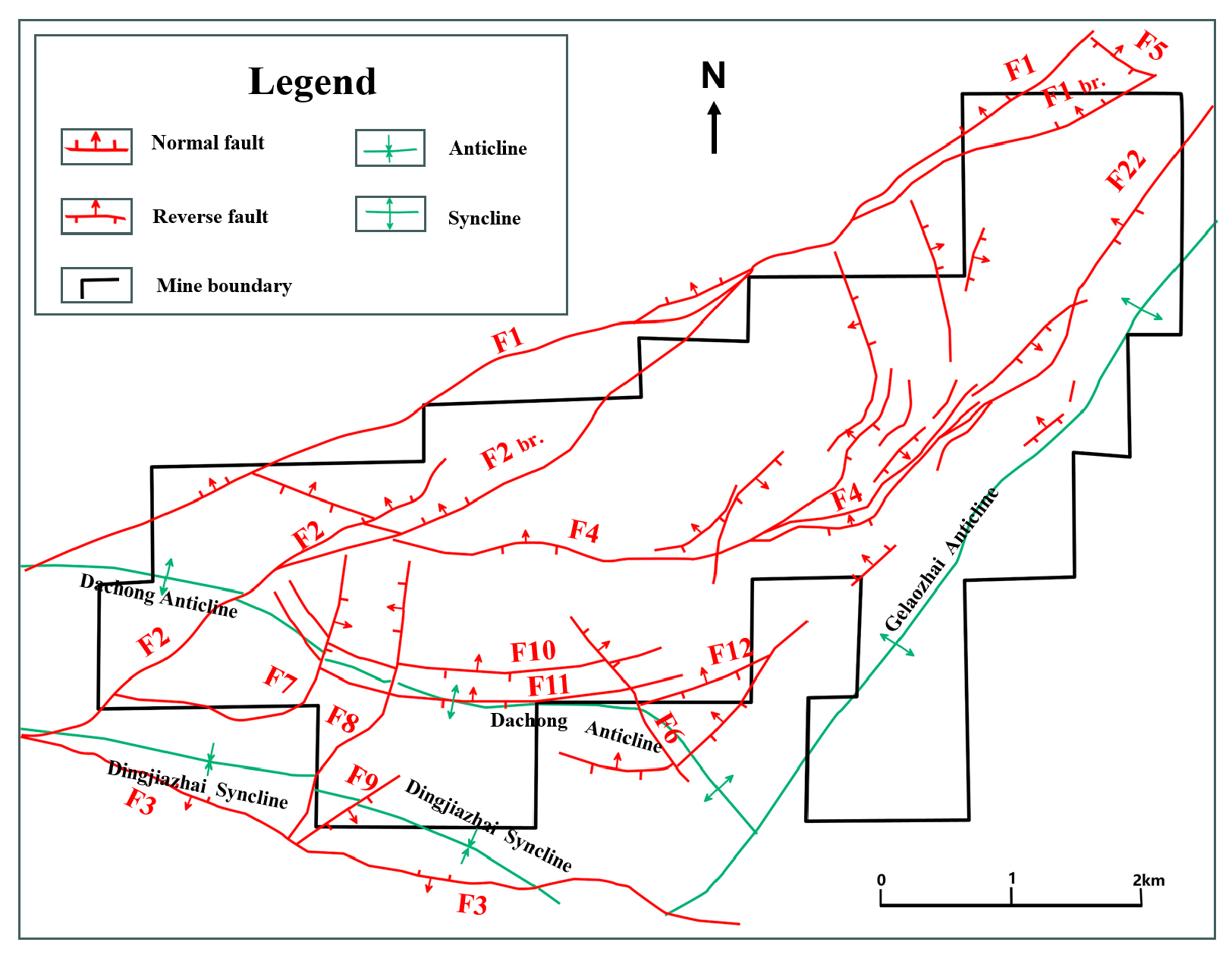
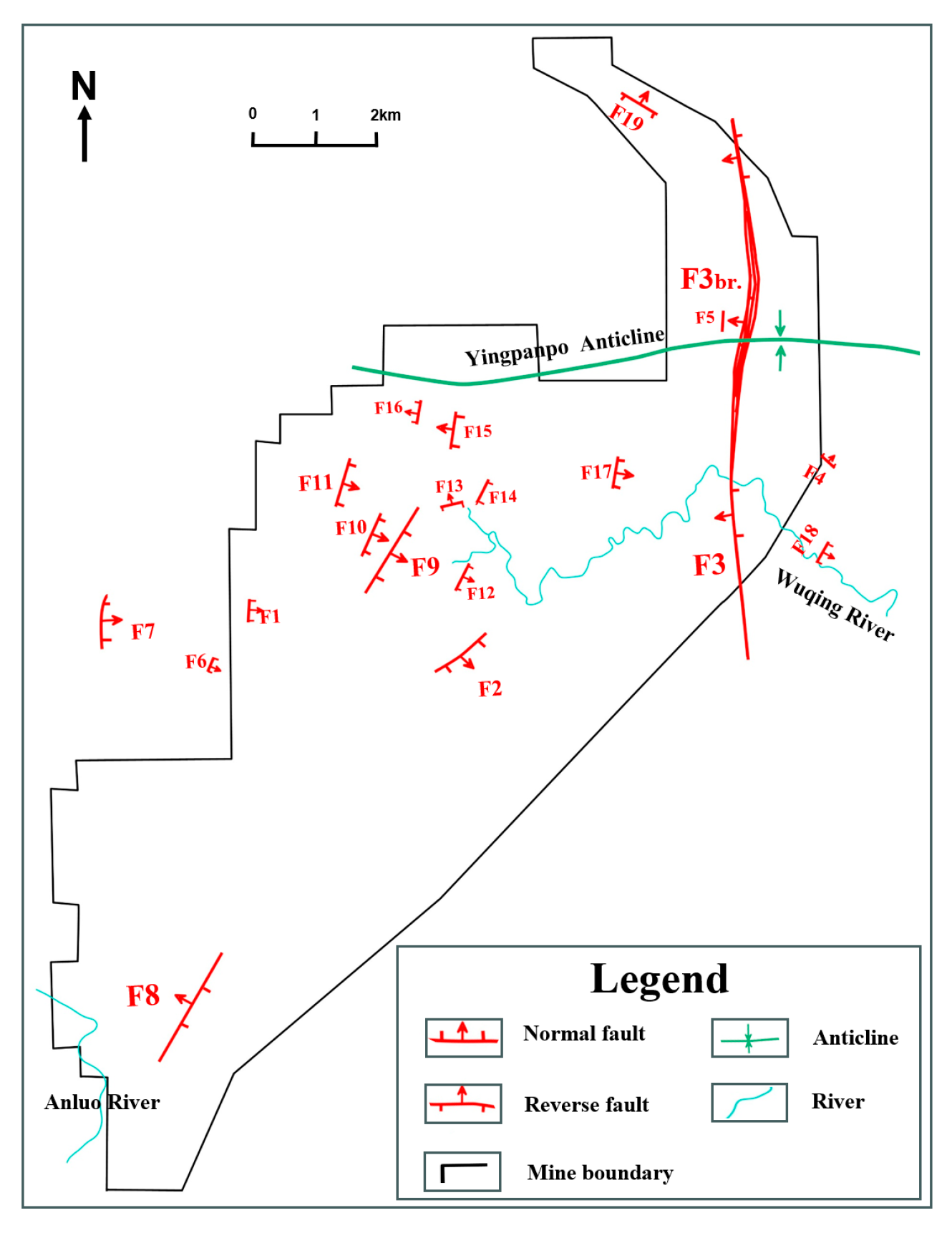
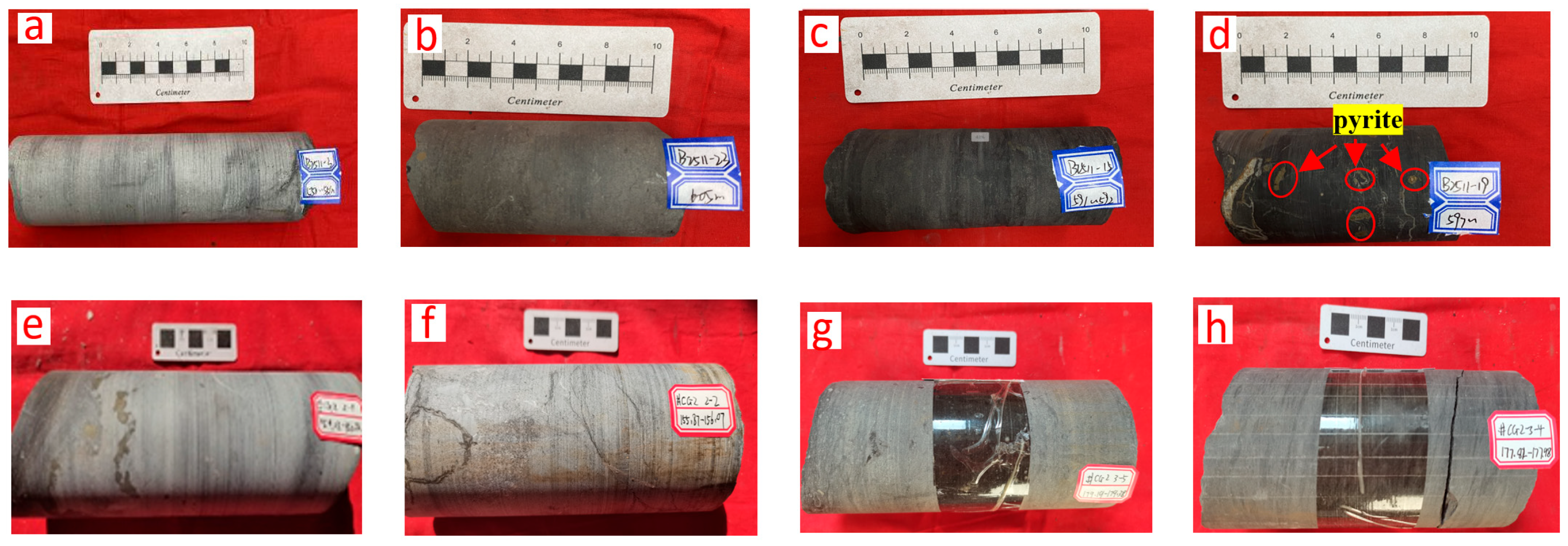
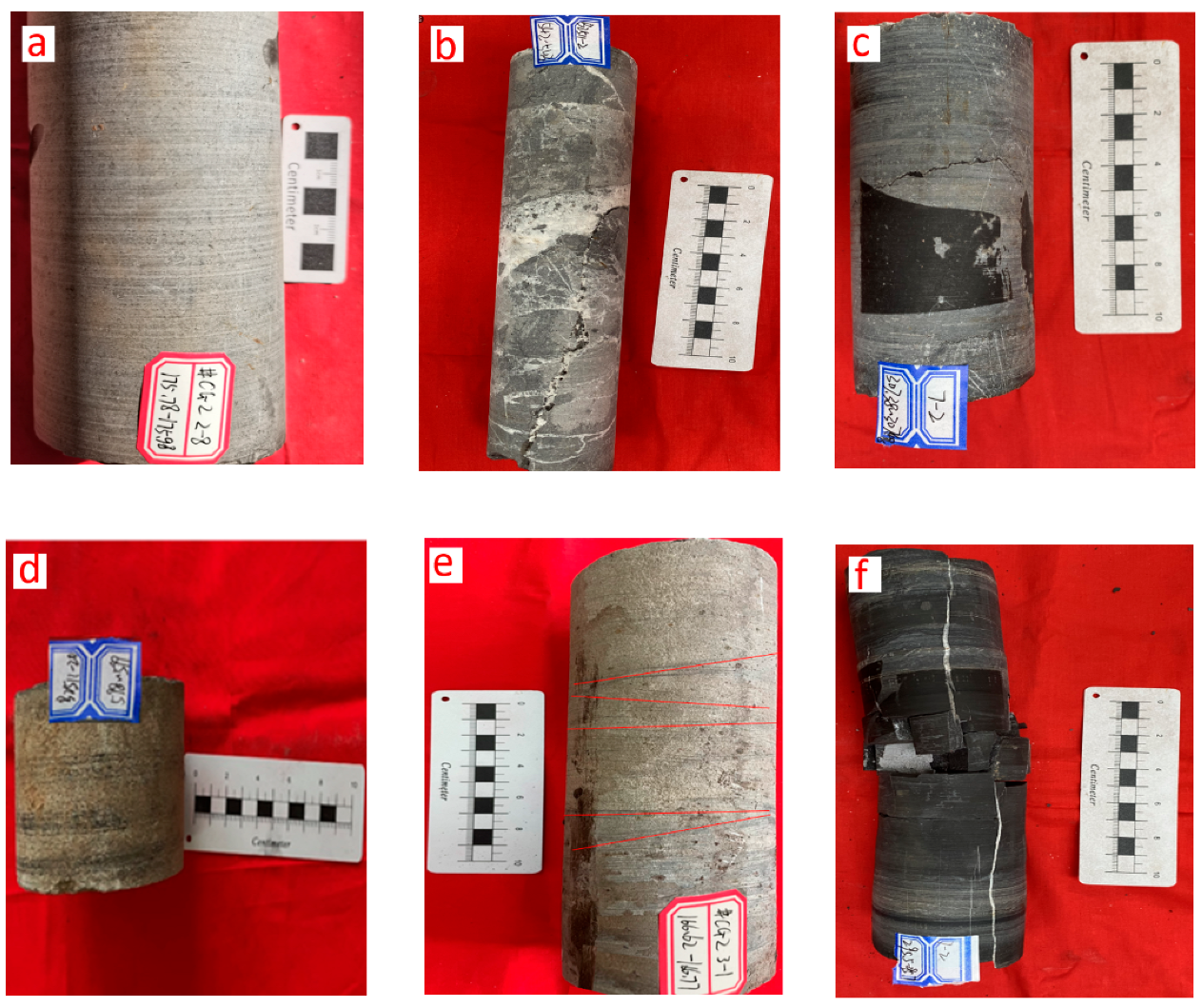


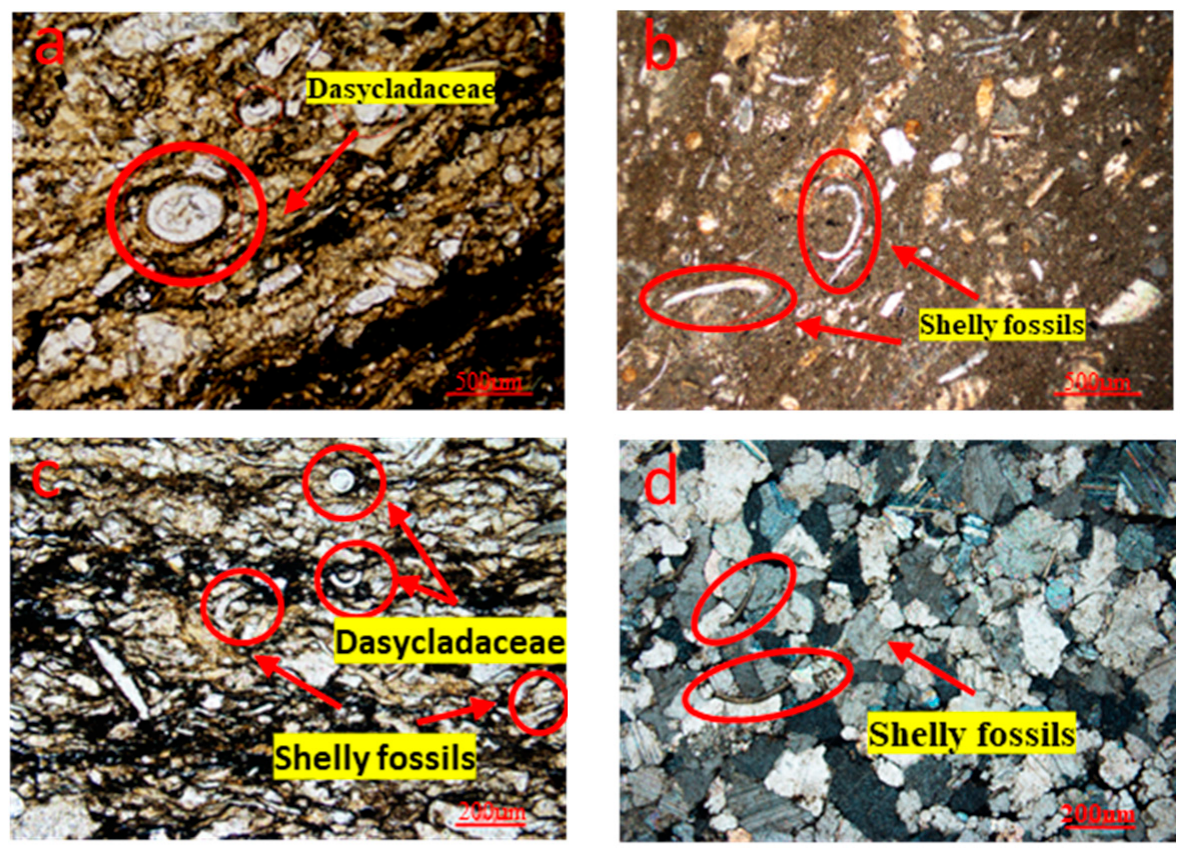

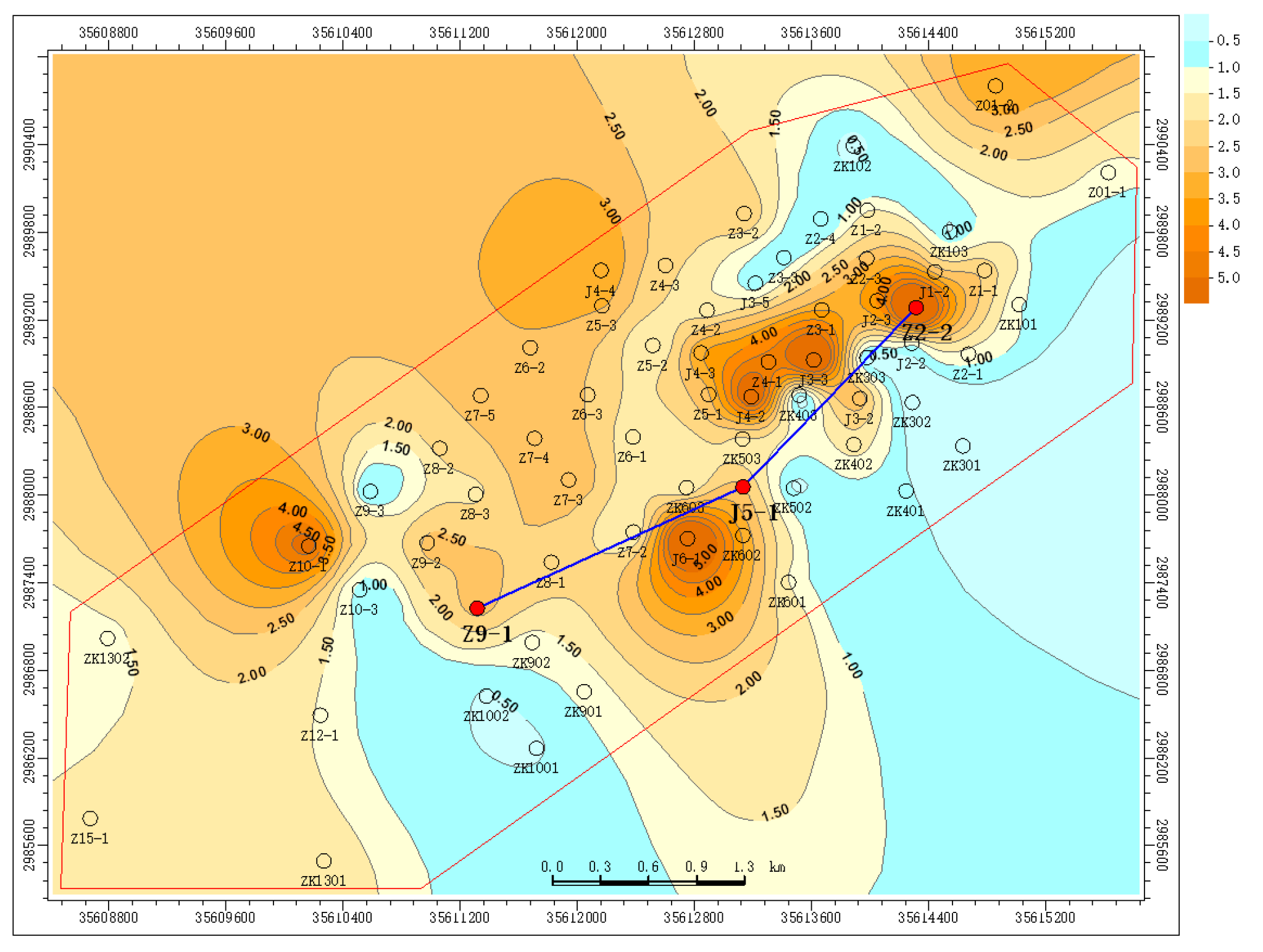
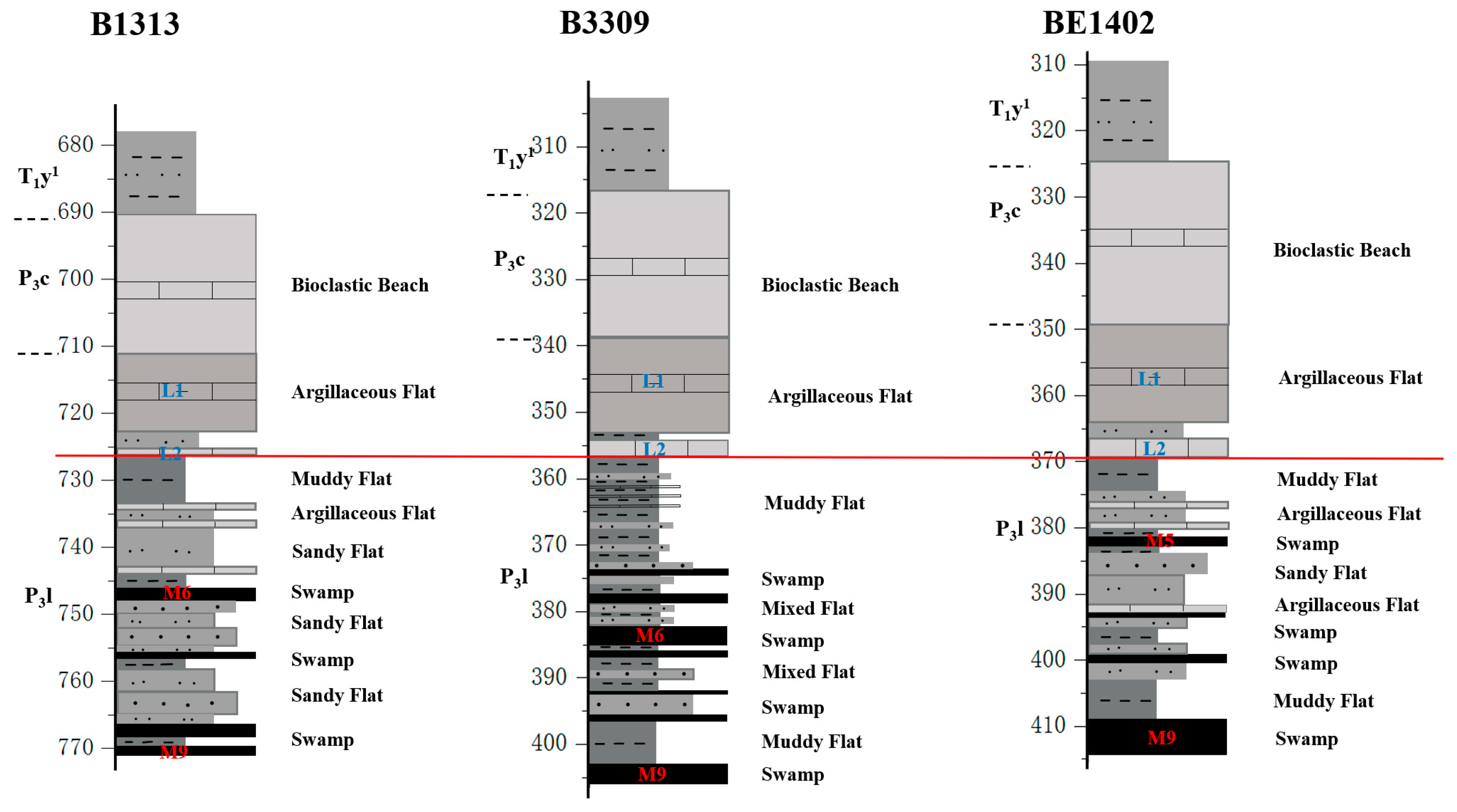
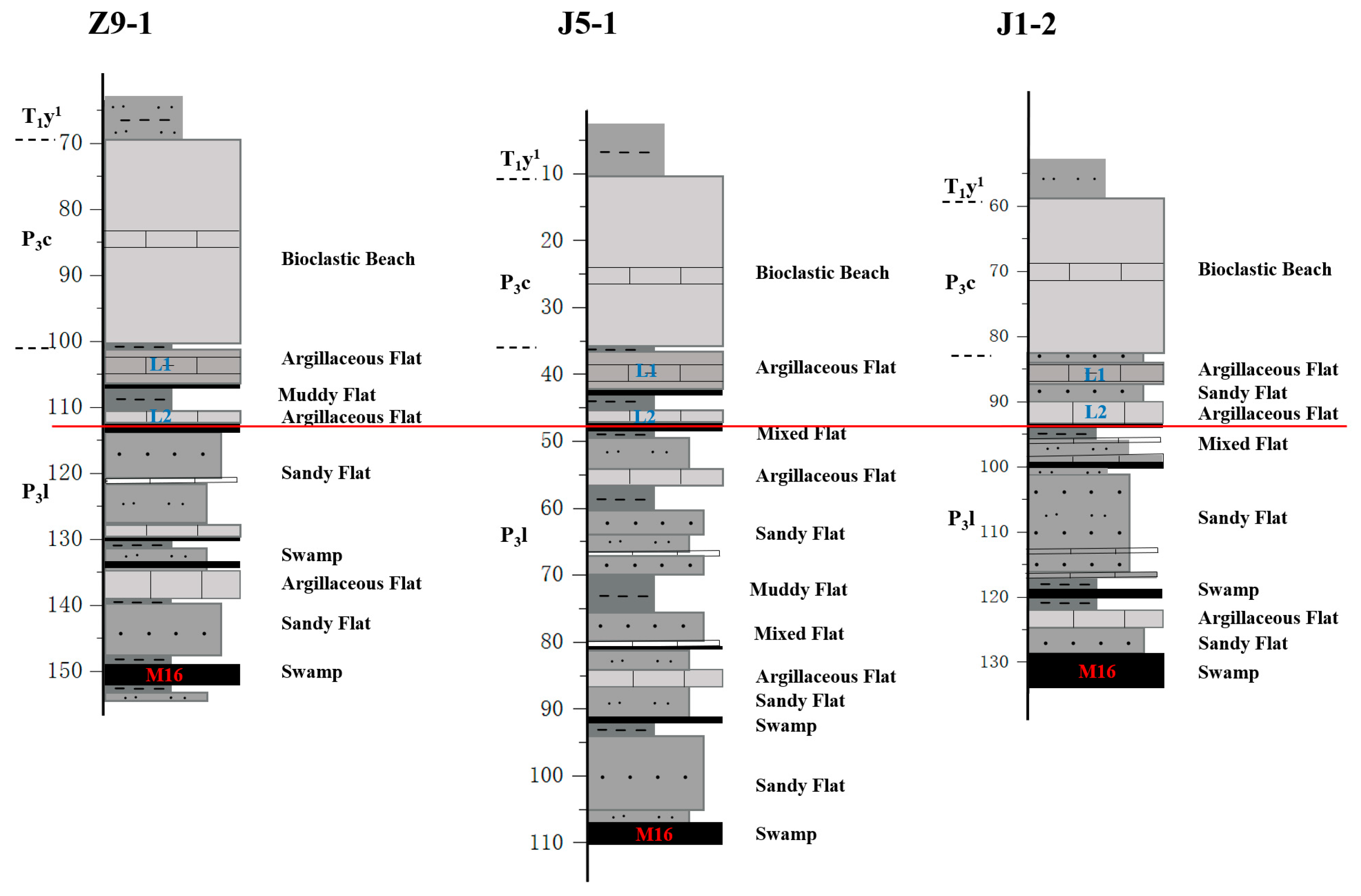
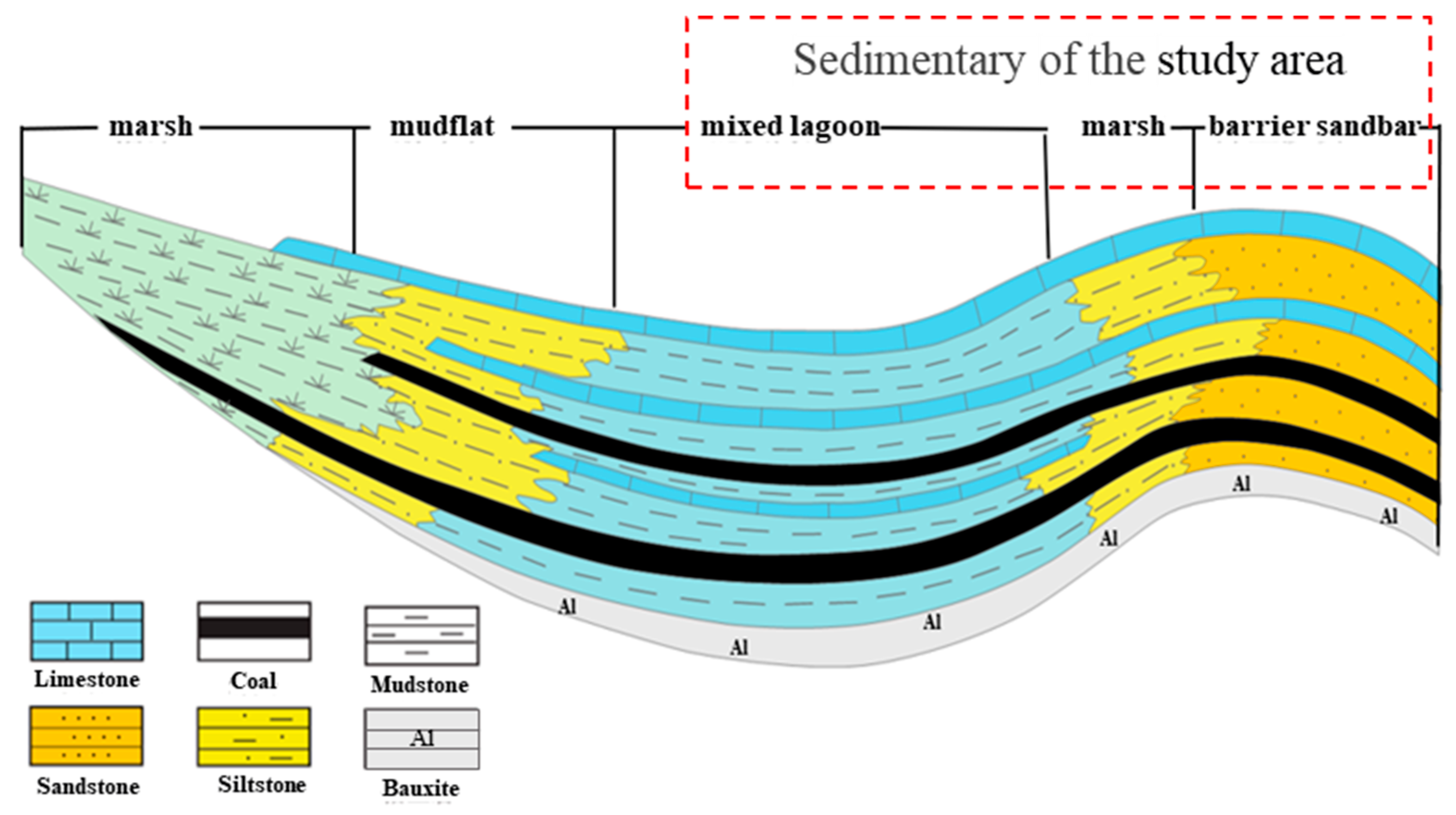
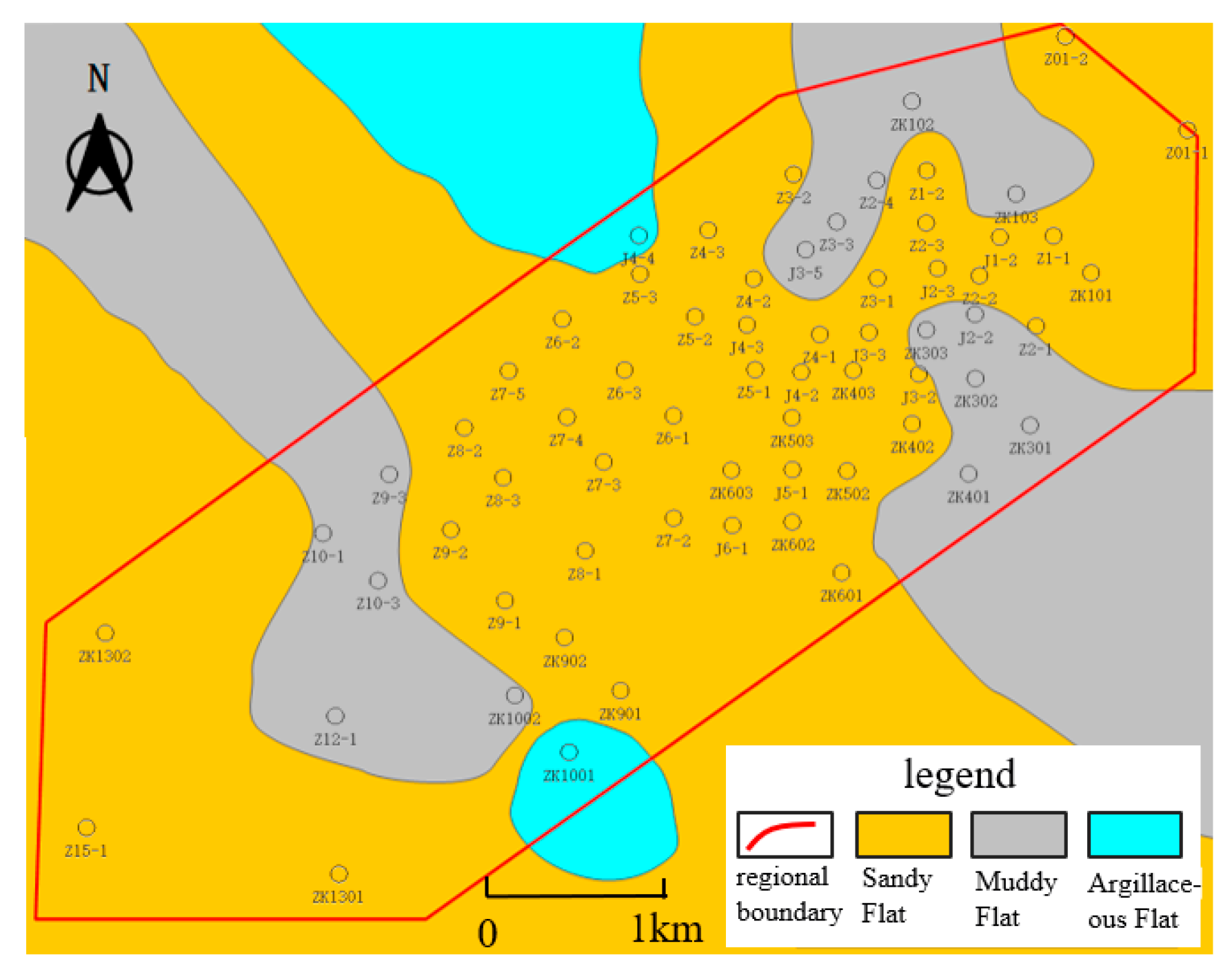
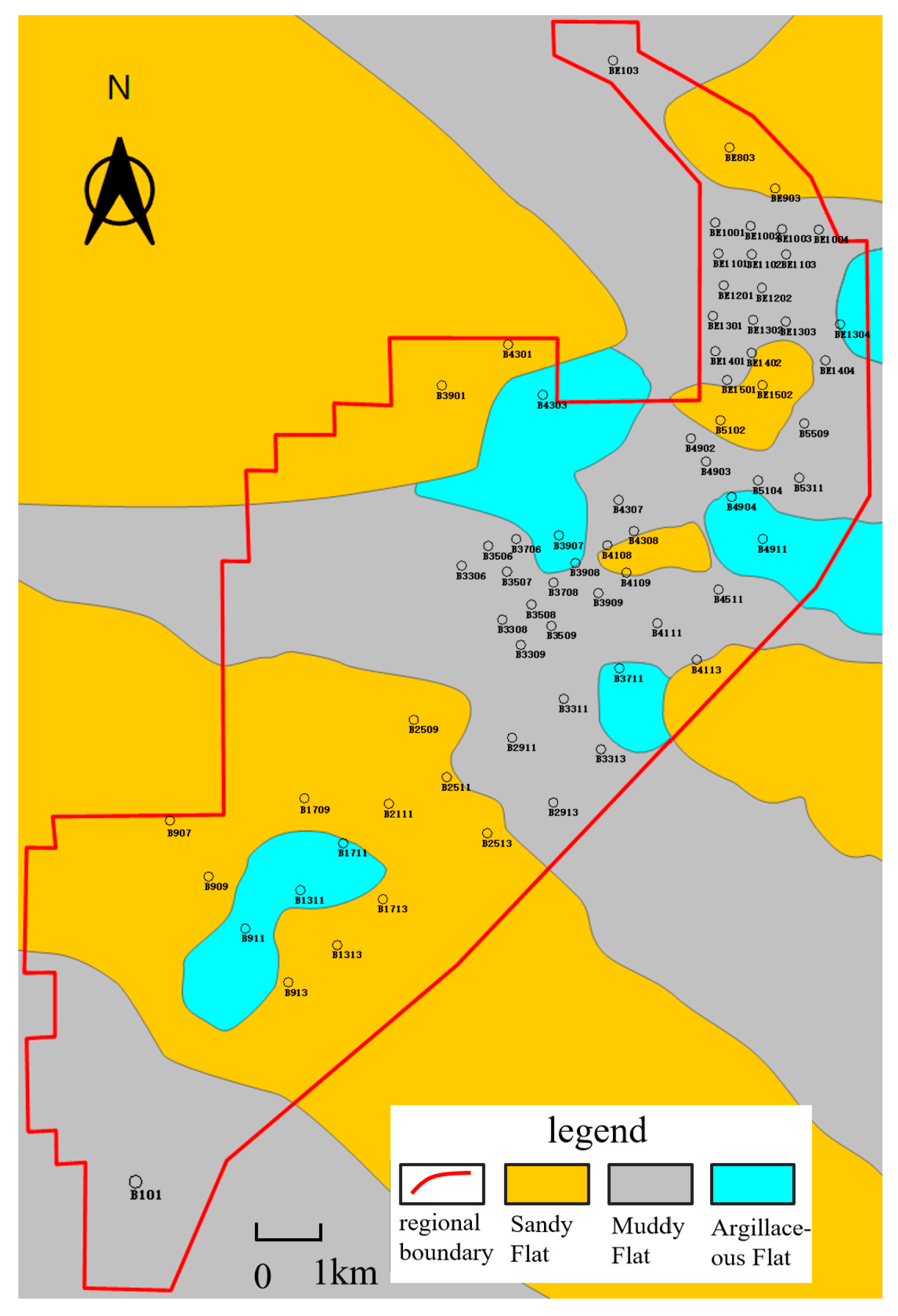

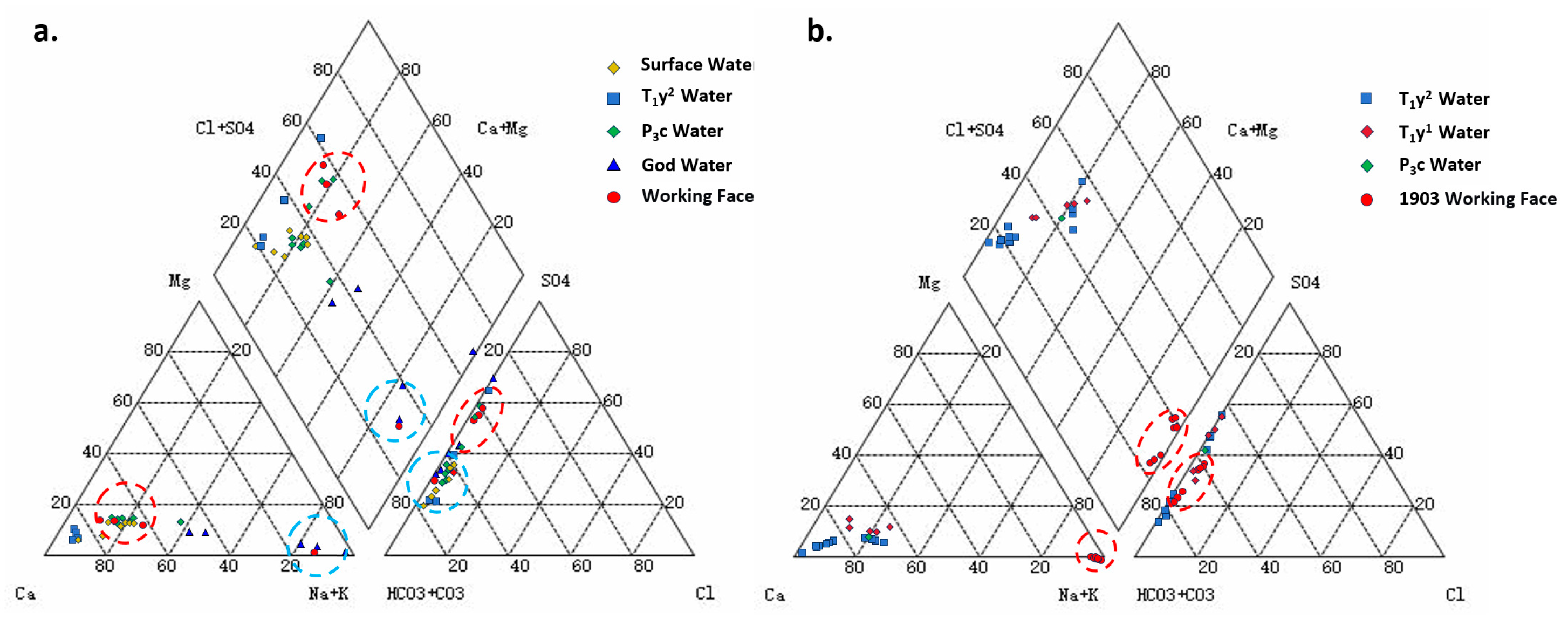
| Formation | Rocks | Color | Fossils | Sedimentary Structures | Sedimentary Microfacies | Sedimentary Subfacies | Sedimentary Facies |
|---|---|---|---|---|---|---|---|
| P3c | limestone | light-gray | forams, a few gastropods | parallel lamination, small cross, suture line | skeletal bank | shallow bank | open platform facies |
| P3l | mud limestone | gray-dark gray | algae, bioclasts and plant fragments | parallel lamination, suture line | lime flat | tidal flat–lagoon | restricted platform facies |
| silt-fine sandstone | dark | parallel lamination, cross lamination | sand flat | ||||
| mudstone, muddy siltstone | dark | horizontal lamination | mud flat | ||||
| coal, peat | black | higher plant fossils | - | swamp |
Disclaimer/Publisher’s Note: The statements, opinions and data contained in all publications are solely those of the individual author(s) and contributor(s) and not of MDPI and/or the editor(s). MDPI and/or the editor(s) disclaim responsibility for any injury to people or property resulting from any ideas, methods, instructions or products referred to in the content. |
© 2025 by the authors. Licensee MDPI, Basel, Switzerland. This article is an open access article distributed under the terms and conditions of the Creative Commons Attribution (CC BY) license (https://creativecommons.org/licenses/by/4.0/).
Share and Cite
Fan, J.; Hou, E.; Wang, S.; Zhu, K.; Liu, Y.; Guo, K.; Wang, L.; Yu, H. Sedimentary Facies Characteristics of Coal Seam Roof at Qinglong and Longfeng Coal Mines. Processes 2025, 13, 3353. https://doi.org/10.3390/pr13103353
Fan J, Hou E, Wang S, Zhu K, Liu Y, Guo K, Wang L, Yu H. Sedimentary Facies Characteristics of Coal Seam Roof at Qinglong and Longfeng Coal Mines. Processes. 2025; 13(10):3353. https://doi.org/10.3390/pr13103353
Chicago/Turabian StyleFan, Juan, Enke Hou, Shidong Wang, Kaipeng Zhu, Yingfeng Liu, Kang Guo, Langlang Wang, and Hongyan Yu. 2025. "Sedimentary Facies Characteristics of Coal Seam Roof at Qinglong and Longfeng Coal Mines" Processes 13, no. 10: 3353. https://doi.org/10.3390/pr13103353
APA StyleFan, J., Hou, E., Wang, S., Zhu, K., Liu, Y., Guo, K., Wang, L., & Yu, H. (2025). Sedimentary Facies Characteristics of Coal Seam Roof at Qinglong and Longfeng Coal Mines. Processes, 13(10), 3353. https://doi.org/10.3390/pr13103353






